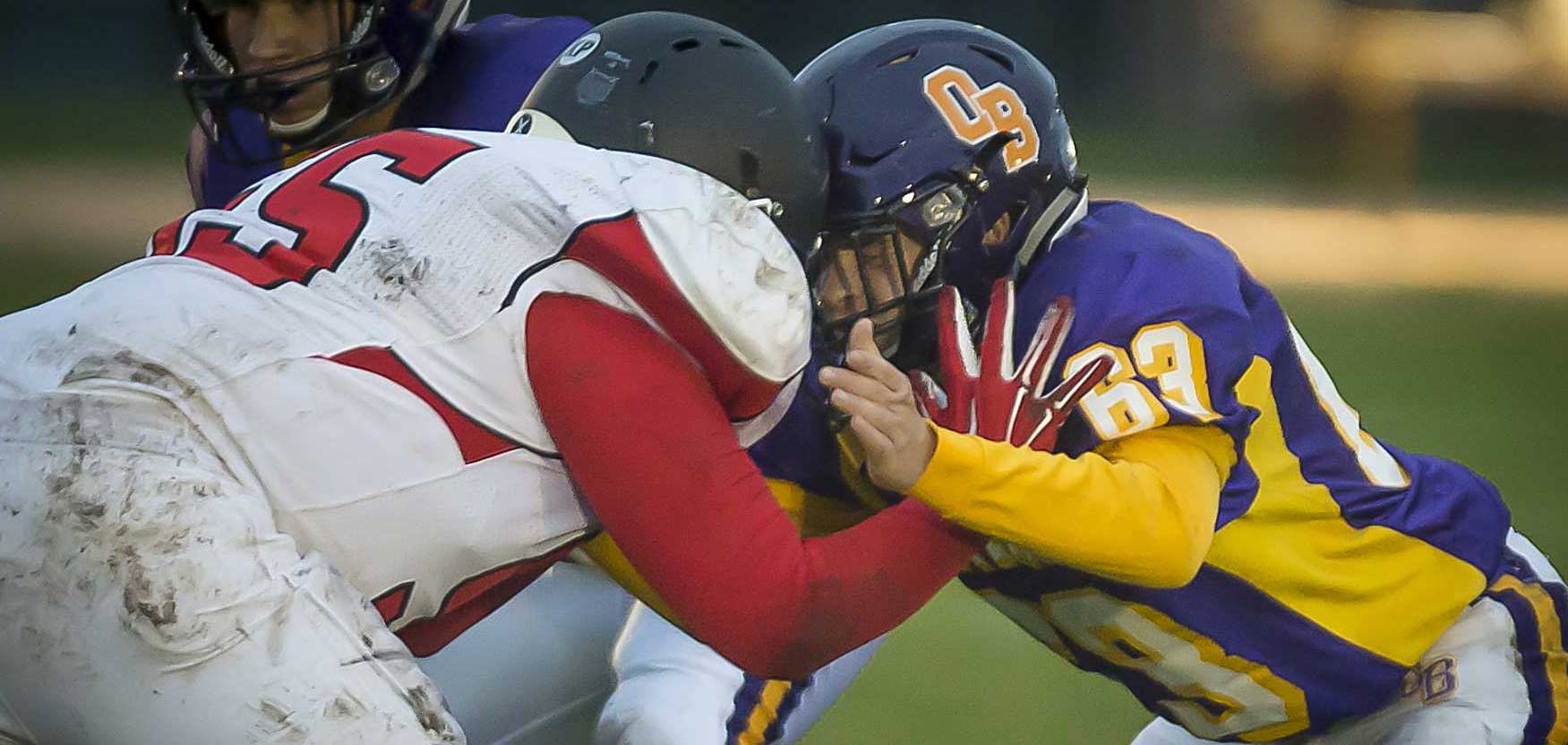At Oyster Bay, ‘a set of eyes that goes on every athlete’
The Oyster Bay Board of Education debated and then voted on whether to eliminate the football program at an open meeting last December.
Board member Michael Castellano, 54, a general surgeon, said his goal that day was to cancel the program because of the risk of significant injury.
Two months before the vote, Shoreham-Wading River high school football player Thomas Cutinella died after a helmet-to-helmet hit on the field.
“[Football is] a danger, with the injuries I see, the injuries I read about,” Castellano said. “I always thought it was hard to ethically pay for something that’s so dangerous to kids.”
The board voted 5-1 in favor of keeping football. Castellano was the lone dissenter.
“We listened to the community,” board member Jennifer Romeo said. “The community came forth and said they don’t want to stop football.”
Castellano said he was satisfied that he at least spurred a conversation in his community about football’s injury risk.
“I wanted to make sure everyone was aware how dangerous this sport is,” he said. “Some parents don’t realize how dangerous this sport is, what the long-term ramifications can be. I wanted to put it out there.”
Out of the discussion came a promise to spend whatever was necessary to upgrade the team’s equipment — notably the helmets.
In June, Oyster Bay purchased 85 five-star helmets from Riddell that feature a bendable forehead that is intended to absorb more impact. Inside those helmets are sensors that send a signal to a handheld device when a player receives a hit above a certain threshold of force.
The total cost was $33,915, according to the purchase order obtained by Newsday through a Freedom of Information Law request. Riddell said Oyster Bay is the first school on Long Island outfitted with these sensors.
“To me this gives us and our trainer a chance to look at all 11 players [on the field] at a given time — or all 80 or so athletes that are in our program at a given time — because they’re all going to be hooked into the system and hooked right up to the trainer,” athletic director Kevin Trentowski said. “It’s a set of eyes that goes on every athlete.”
Two weeks into the regular season, Trentowski said the biggest impact of the sensors has been allowing the school’s athletic trainer to go to other sporting events as opposed to feeling obliged to be at all of the football practices. “When she returns back to the football site the helmets alert her to players worth checking on,” he said.
Trentowski said the sensor has gone off “only a handful of times” and none of them have led to a player being diagnosed with a concussion.

 Oyster Bay plays against Friends Academy on Oct. 3, 2015.
Oyster Bay plays against Friends Academy on Oct. 3, 2015.